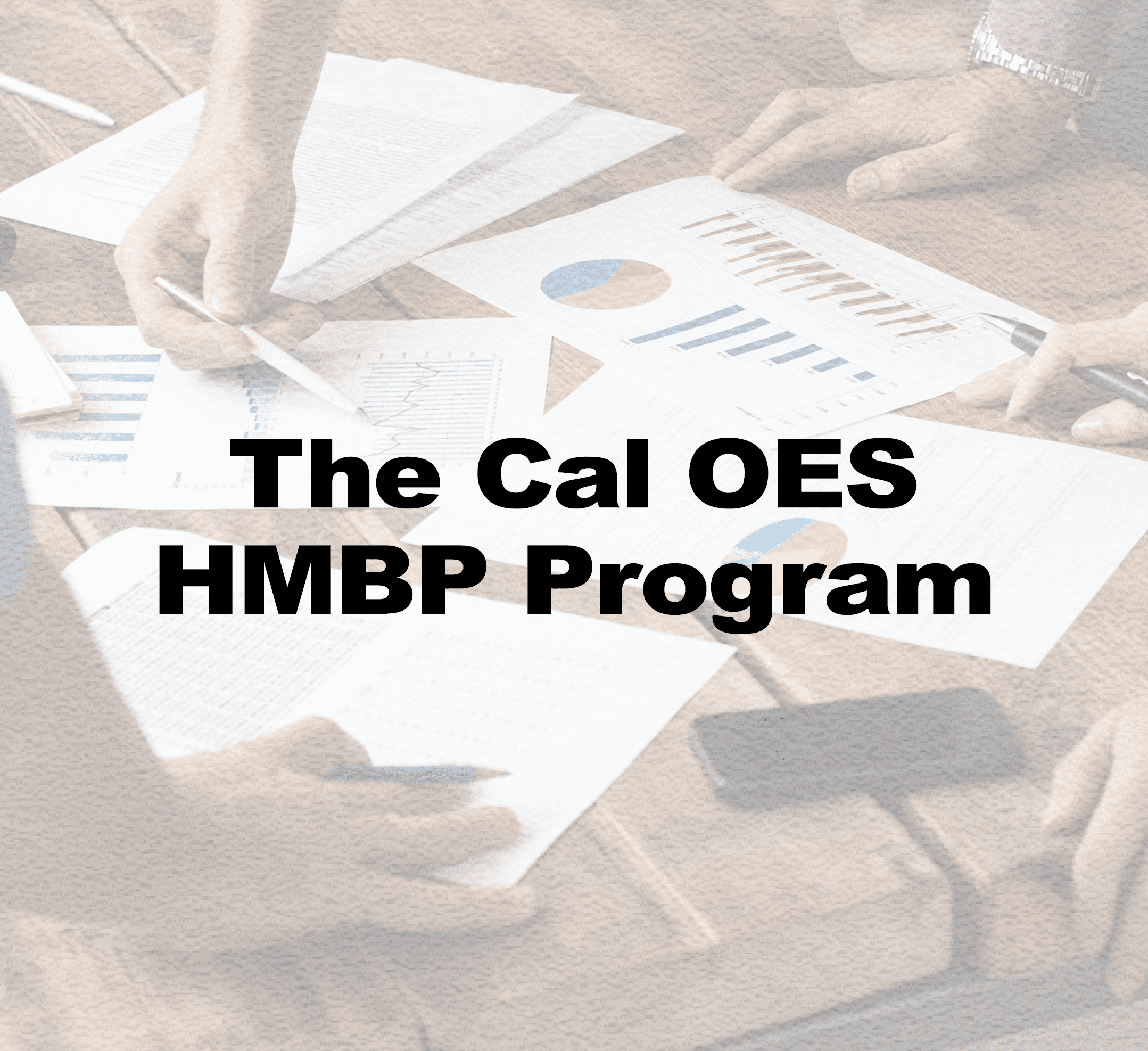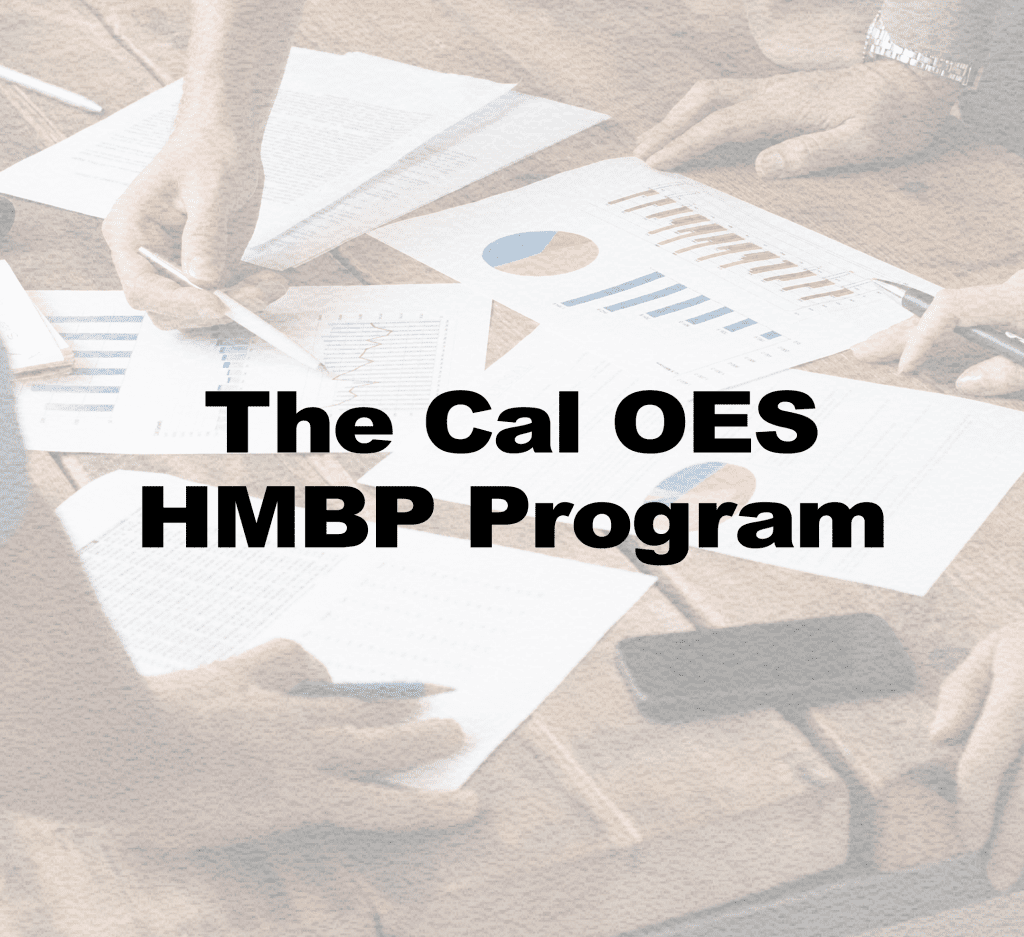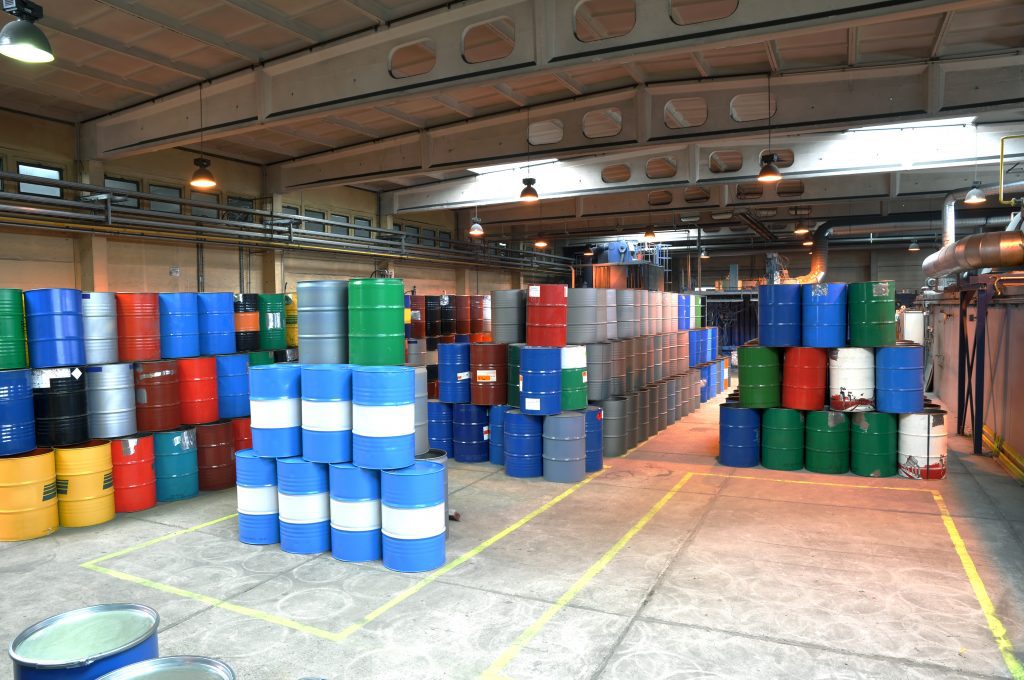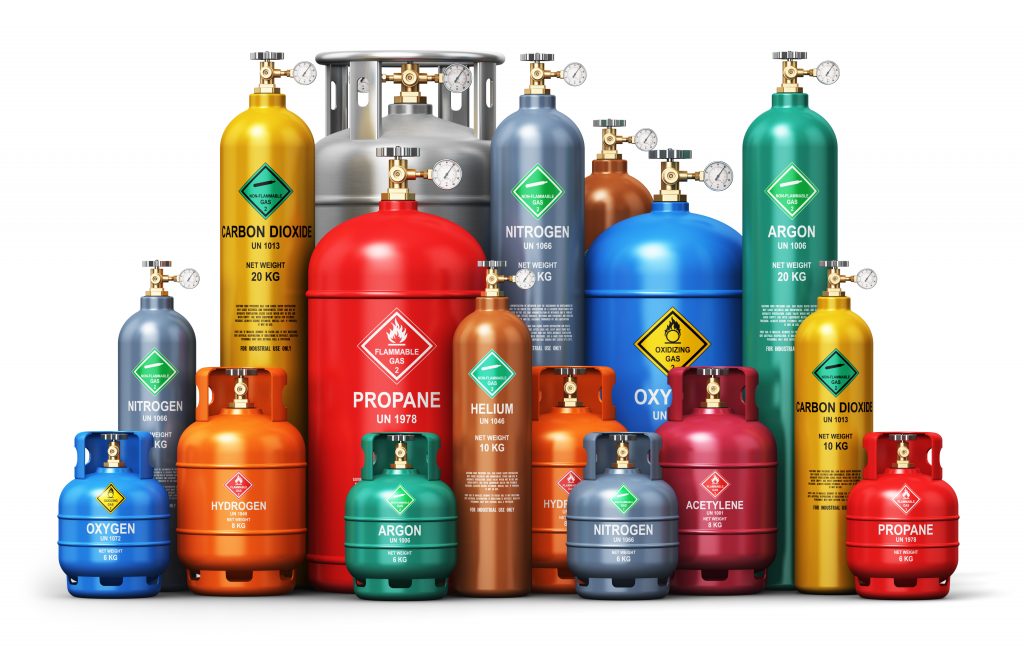
The Cal OES HMBP Program

Written by: Virginia McCormick, NES, Inc.

The HMBP program provides vital information in the event of a release or threatened release of a hazardous material.
This article is part of a special dedicated series that covers California CUPAs and the Unified Program. For a complete overview, see the June 2019 NES article California CUPA Overview: Enforcing the CalEPA Unified Program.
Disaster Prompts the Cal OES HMBP Program
In early December of 1984, a gas leak at a pesticide plant caused the immediate deaths of an estimated two to three thousand people in Bhopal, India. The following weeks saw many additional gas-related deaths, injuries, and illnesses. The tragedy is one of the largest industrial disasters ever recorded, with the total reported death toll varying between ten and twenty thousand people.
In response to the Bhopal disaster, Cal OES established the Hazardous Materials Business Plan (HMBP) Program in 1986. The program is intended to, “prevent or minimize the damage to public health and safety and the environment from a release or threatened release of hazardous materials.” The program helps determine safety precautions that need to be met by businesses that handle specific amounts of hazardous materials. The resulting document is the HMBP, or Business Plan. The requirements for the HMBP program are outlined in the California Health and Safety Code (HSC) Division 20, Chapter 6.95, Article 1.
The Federal Emergency Planning and Community Right-to-Know Act (EPCRA) was established in the same year as the HMBP program. The requirements of EPCRA are facilitated through the HMBP program. However, the HMBP program is California-specific and is enforced by Certified Unified Program Agencies (CUPAs) and/or Participating Agencies (PAs).

The HMBP program also satisfies federal and state community Right-to-Know laws.
A hazardous material is one that, because of its quantity, concentration, or physical/chemical characteristics, poses a, “significant present or potential hazard to human health and safety or to the environment if released into the workplace or the environment.” Listings of hazardous materials can be found in various legislature, such as Title 10 of the Code of Federal Regulations for radioactive materials and Title 8 of the California Code of Regulations for the Cal/OSHA hazardous substances list.
California legislature is regularly being revised to include new information and requirements regarding hazardous materials. In 2018, NES reported on CalEPA increasing the number of chemical hazard categories from five to twenty-four. In order to stay in compliance, business owners are expected to keep up with such regulatory changes to state and federal laws.
HMBP Program Requirements
Under Cal OES, a business in California is required to establish an HMBP if it manages hazardous materials in amounts greater than or equal to 55 gallons for liquids, 500 pounds for solids, or 200 cubic feet for compressed gases.
However, there are further qualifications and some exceptions to the program. For more information on the HMBP program and hazardous materials, see the Cal OES publication Hazardous Material Business Plan FAQ.
The HMBP program reporting requirements include business activities and owner/operator identification, an inventory of hazardous materials, an Emergency Response Plan or procedure, training for employees, and a site map. By providing information and ensuring plans have been specified, the HMBP can serve as a guide for a facility’s employees and for first responders in the case of a hazardous materials release.

Developing and maintaining an accurate HMBP will help keep employees and the environment protected in the event of a workplace emergency.
Inventory of Hazardous Materials
A detailed inventory of all hazardous materials at a facility that meet or exceed the reporting thresholds must first be compiled for the HMBP. All hazardous materials inventories must meet state and federal reporting requirements, including the physical state, maximum daily amount, and storage locations. The inventory is done primarily in order to document significant amounts of hazardous materials so that emergency responders can effectively protect a business, its employees, the public, and the surrounding environment.
Emergency Response Plan & Procedures
An Emergency Response Plan promotes employee safety and the enduring wellbeing of the business or agency. At a minimum, the plan must include protocols for reporting workplace emergencies, evacuation policies and procedures, contact information for individuals designated to provide further instruction in the case of an emergency, and actions that must be performed by designated employees prior to evacuation.
The September 2017 NES article, Emergency Action Plan Design and Implementation provides an overview of Emergency Action Plan implementation and includes a section on Emergency Response Plans.
Training Program for Employees
Under the HMBP program, all employees must be trained on safety measures, emergency contacts, and mitigation/evacuation procedures in the event of a hazardous material release. Employees must be trained upon initial hiring with refresher training provided annually thereafter. The position of each employee and his/her potential hazardous materials exposure risk should be considered. The training must be documented, and the training records must be retained for a minimum of three years and be made available to any state or federal inspector upon request.
Site Map
Finally, a site map must be submitted. A north-oriented site map must include, “loading areas, internal roads, adjacent streets, storm and sewer drains, access and exit points, emergency shutoffs, evacuation staging areas, hazardous material handling and storage areas, and emergency response equipment.”
HMBP Program Reporting & Submittal
Businesses regulated under the HMBP program use the California Environmental Reporting System (CERS) to electronically report the hazardous materials they keep at their facilities. By submitting a completed HMBP through CERS, businesses will fulfill the information requirements of the HMBP program.
Businesses must submit an initial HMBP to CERS as soon as hazardous materials are handled. Excluding locally enforceable renewal dates, annual HMBP renewals are required by the 1st of March. According to Cal OES, a business must review its HMBP at least once every three years to determine if revision is needed. HMBPs must be updated within 30 days for significant changes, such as handling of any previously undisclosed hazardous materials that meet or exceed the reporting thresholds.

Employers that store hazardous materials at or above 55 gallons for liquids, 500 pounds for solids, or 200 cubic feet for compressed gases are regulated by the HMBP program.
Once submitted, the CUPA will verify the HMBP information and provide it to agencies responsible for the protection of public health and safety and the environment, such as fire departments, hazardous materials response teams, and local environmental regulatory groups.
Cal OES recommends that regulated businesses contact the local CUPA to determine any specific requirements for submittal of the Emergency Response Plans and procedures, training program information, and additional information: “The CUPA may have requirements in addition to the State of California HMBP requirements. Check with the local jurisdiction having authority to implement and enforce the HMBP Program to determine what those additional requirements, if any, are.”
NES Environmental Consulting
NES has been providing environmental consulting and training services for the past 30 years. NES regularly provides Hazardous Materials Business Plan / CERS training on behalf of CUPAs and public and private businesses throughout California. NES also assists with the preparation and submittal of businesses’ Hazardous Materials Business Plans. For more information, please contact NES at office@nesglobal.net or 916-353-2360 / 1-800-NES-ADVISE.
References:
Government of Madhya Pradesh: Bhopal Gas Tragedy Relief and Rehabilitation Department, Bhopal
The California CUPA Forum: Business Plans
California Health and Safety Code (HSC) Division 20, Chapter 6.95, Article 1
Federal Emergency Planning and Community Right-to-Know Act
NRC Regulations, Title 10, Code of Federal Regulations
